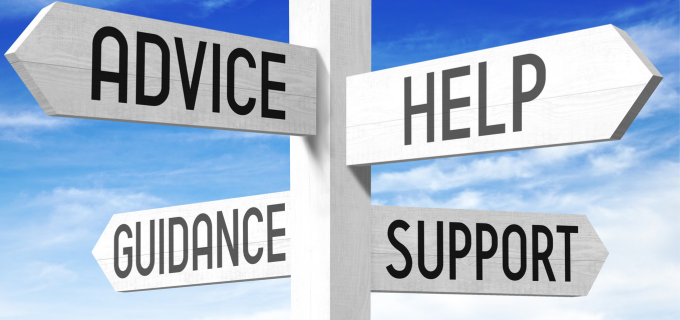Implementing a new Constituent Relationship Management (CRM) platform may feel like an impossible feat—one you know will benefit your organization but wonder if it’s worth the cost (both fiscally and personally).
We sat down with Binti Harvey, Vice President for External Relations and Institutional Advancement at Scripps College, to discover the benefits and challenges of a CRM database. Here’s what she had to say.
Benefits and Challenges
Regarding the most significant benefits of implementing a CRM, Harvey says it enables a deeper understanding of constituents and promotes engagement. “We can have the right conversations at the right times to anticipate interests and needs and engage our constituents on a deeper level,” Harvey said.
But a CRM is not a perfect solution. “With any CRM, there are some functions and operations that the platform is better or worse—there is no perfect tool,” Harvey said. “This allows thinking about other platforms to connect and enhance the basic capability or function, creating an ecosystem of tools.”
Whether you add integrations or not, maximizing the CRM database to its full potential is critical. Harvey says, “We often have a Ferrari driving like a Ford. Maximizing efficiency requires staff, time, and expertise capacity.”
So how does Harvey manage the benefits with the challenges? First, balance. “It’s important to have the folks working most closely to the CRM database be a part of the knowledge communities,” Harvey said. “We balance a constant learning mode and a continuous improvement cycle.”
Constant learning happens by listening to what other institutions, vendors, and firms like Precision Partners have to say. “Having these relationships offer a birds-eye view of how the tool is being used and best practices. This helps us regularly evaluate and adjust our approach,” Harvey said. “Robust onboarding and training system—including a protocol for new and existing employees—helps us adhere to those practices and accelerate our initiatives.”
Strategic Planning and Budgeting
CRM platforms aren’t just “nice to have.” They can be essential to supporting your divisional goals and strategic plan. “We have a robust two-year planning cycle that starts with articulating our aspirations. Then we conduct a gap analysis, assigning specific metrics to a strategy for closing those gaps,” Harvey said. “The CRM allows us to measure those things as levers.”
“For example, increasing engagement of a particular segment of our alumni population, the CRM allows us to segment volunteering per class year, and then we can gauge how we’re moving the needle for those segments,” Harvey added. “In other instances, the CRM allows us to set a goal and monitor our fundraising outcomes explicitly, specifically how it aligns with our progress. With this data, we can make our aspirations concrete and keep the strategies we’ve identified as the highest priority.”
Because the CRM database is mission critical, Harvey says they build their budget around the cost of the CRM, which remains consistent. What’s not consistent is how much (if any) they budget for integrations. “Choosing a new satellite tool is a significant investment, so we’re very thoughtful about that,” Harvey said. “Before we commit to integrations, we focus on what the core database offers and assess if the new tool is worth the additional human and financial expenses accompanying that investment. We also monitor the always-evolving database for anticipated new features or capabilities in development—opting to maximize the database instead of integrating a new tool.”
Fostering Success
The question remains, can an advanced CRM database foster success principles like collaboration, productivity, data quality, and sharing information? Yes, but it depends on organizational culture. “My philosophy is those are aspects of organizational culture that should be nurtured and bread with or without the CRM database, but the database becomes a way to reinforce and bring them to life,” Harvey said. “The temptation can be for people to think the database solely belongs to the advancement services or operations team. With this thinking, there isn’t shared ownership for its health and functioning quality. But what we’ve tried to do here is ensure data quality has shared ownership and accountability.”
Which Harvey adds is an opportunity for conversations and cross-functional collaborations. “With this approach, people have moved away from their shadow systems, and our CRM has become the single source of truth,” Harvey said.
But getting there was a painful process. “We have one more area to resolve, but our success so far has required a lot of discussions about process, agreement on definitions, deciding who inputs what and how do you document agreement, as well as conducting intangible exercises to build trust,” Harvey said. “Users of the CRM must trust those who are maintaining and populating the database so they feel confident data is accurately reflected.”
The intangible exercises Harvey refers to a focus on team building. “We’ve engaged our teams in exercises to learn more about each other’s work and build trust,” Harvey said. “Much of that work happened while working remotely because we were transitioning our CRM during the pandemic. But now that we are meeting in person, the trust-building happens more efficiently and effectively, and we’ve made progress faster.”
“Cross-functional meetings are happening, and our teams are joint problem-solving. This allows for course correction in a much more efficient way,” Harvey added. “Instead of relaying information, there is an opportunity for collaborative creativity when all teams sit in the room and bring perspective.”
A final reminder that no matter how robust your CRM database is, Harvey says it’s not a “silver bullet.” “Your CRM is a tool. The way and when you use it, and your level of knowledge affects the extent to its ability to achieve what it needs to do,” Harvey said. “But maximizing your CRM database enables you to have a high functioning, well-designed tool, which allows your team more space for engagement, better decision making, and high-level transformative activities.”

